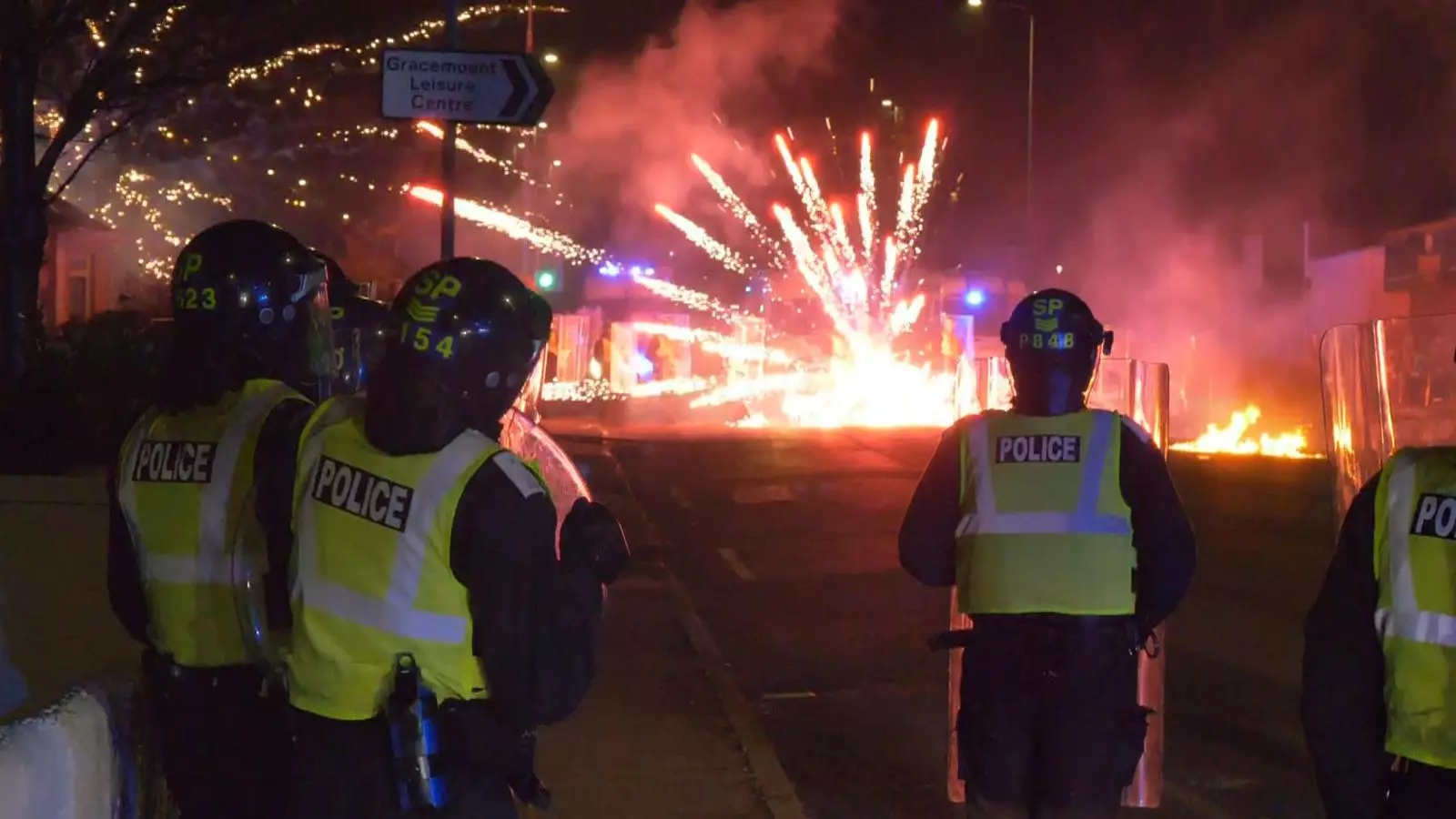In recent days, the city of Edinburgh has witnessed a disheartening episode of public disorder. Large groups of young individuals took to the streets, engaging in violent confrontations with the police, which included the throwing of fireworks, bricks, and bottles. This unrest primarily unfolded during Bonfire Night, a holiday traditionally associated with fireworks but marred this year by chaos and lawlessness. Disturbing videos circulated on social media highlighted the alarming scenes, showing officers in riot gear trying to maintain order as the streets of Sighthill, Niddrie, Gracemount, and Gilmerton descended into turmoil.
The police force had to escalate their response, with officers donning helmets and shields to counter the aggression they encountered. One officer sustained injuries when a brick was launched through her patrol vehicle’s window, marking a troubling moment in the escalation of tensions. Superintendent Neil Wilson acknowledged the serious nature of the situation, stating that large numbers of youths were engaged in throwing various dangerous objects at law enforcement. In light of the potential for further chaos, authorities were granted enhanced stop-and-search powers in specific areas.
Helicopter support was also mobilized under Operation Moonbeam to assist local police in addressing the menace posed by these fireworks-related offenses. Moreover, in an effort to protect public safety, Lothian Buses suspended all of their services in the Niddrie area, an area notorious for similar disturbances seen just days earlier.
Simultaneously, the broader issue of public safety concerning fireworks has emerged, as exemplified by an incident in Glasgow, where authorities seized a considerable stash of fireworks believed to be inappropriately sold to the public, including children. This raised a broader discussion about the accessibility and sale of fireworks, particularly during festive periods.
In a bid to curb fireworks misuse, Edinburgh and Glasgow have established Fireworks Control Zones (FCZ), which remain in effect from November 1 to 10. Individuals found in violation of these regulations face substantial fines and potential jail time, striving to prevent incidents that could endanger community members or escalate violence.
As authorities grapple with these challenges, it’s important to reflect on the cultural significance of Bonfire Night. Traditionally, this occasion brings communities together to celebrate with fireworks and festivities. However, this year’s celebrations in East Sussex, dubbed the “bonfire capital of the world,” proceeded without major incidents after police advised against attendance due to safety concerns over potential overcrowding. This year’s festivities featured the burning of politically charged effigies, a custom steeped in local tradition that highlights the need for public events to proceed safely and without violence.
The unrest in Edinburgh underscores critical issues surrounding youth behavior, public safety, and the need for community engagement. While fireworks are meant to symbolize celebration, unchecked recklessness threatens to overshadow their intended joy, necessitating serious reflection and action from both the authorities and the community at large.


Leave a Reply